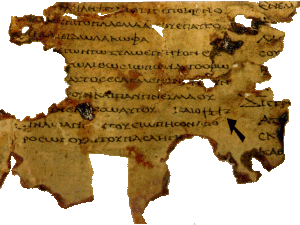Kaige revision
Appearance

The kaige revision, or simply kaige, is shorthand for the ensemble of revisions to the Septuagint made in order to more closely align its translation with the proto-Masoretic Hebrew.[1] The name kaige derives from the revision's pervasive use of Greek kai ge ("and indeed") to translate the Hebrew "we gam" ("and also"). The importance of this revision lies in its status as a precursor to later revisions by 'the Three' (i.e., Aquila, Symmachus and Theodotion) as well as the light it sheds on the origins of the Septuagint.[2]
The individual revisions characteristic of kaige were first observed by Dominique Barthélemy in the Greek Minor Prophets Scroll from Nahal Hever.[3]
References
- ^ Dines, Jennifer Mary (2004). The Septuagint: Understanding the Bible and Its World. London: A&C Black. p. 81-82. ISBN 9780567084644.
- ^ Law, Timothy Michael (2013). When God Spoke Greek: The Septuagint and the Making of the Christian Bible. Oxford: Oxford University Press. p. 76. ISBN 9780199344338.
- ^ Tov, Emanuel (2011). Textual Criticism of the Hebrew Bible. Minneapolis: Fortress Press. p. 143. ISBN 9781451403299.
Further reading
- Timothy Michael Law, When God Spoke Greek, Oxford University Press, 2013.
- Natalio Fernandez Marcos "The B-text of Judges: Kaige Revision and Beyond", in After Qumran. Old and Modern Editions of the Biblical Text – The Historical Books, Edited by H. Ausloos, B. Lemmelijn, J. Trebolle Barrera. BETL 246. Lovaina-Paris-Walpole MA, Peeters 2012, 161-170.
